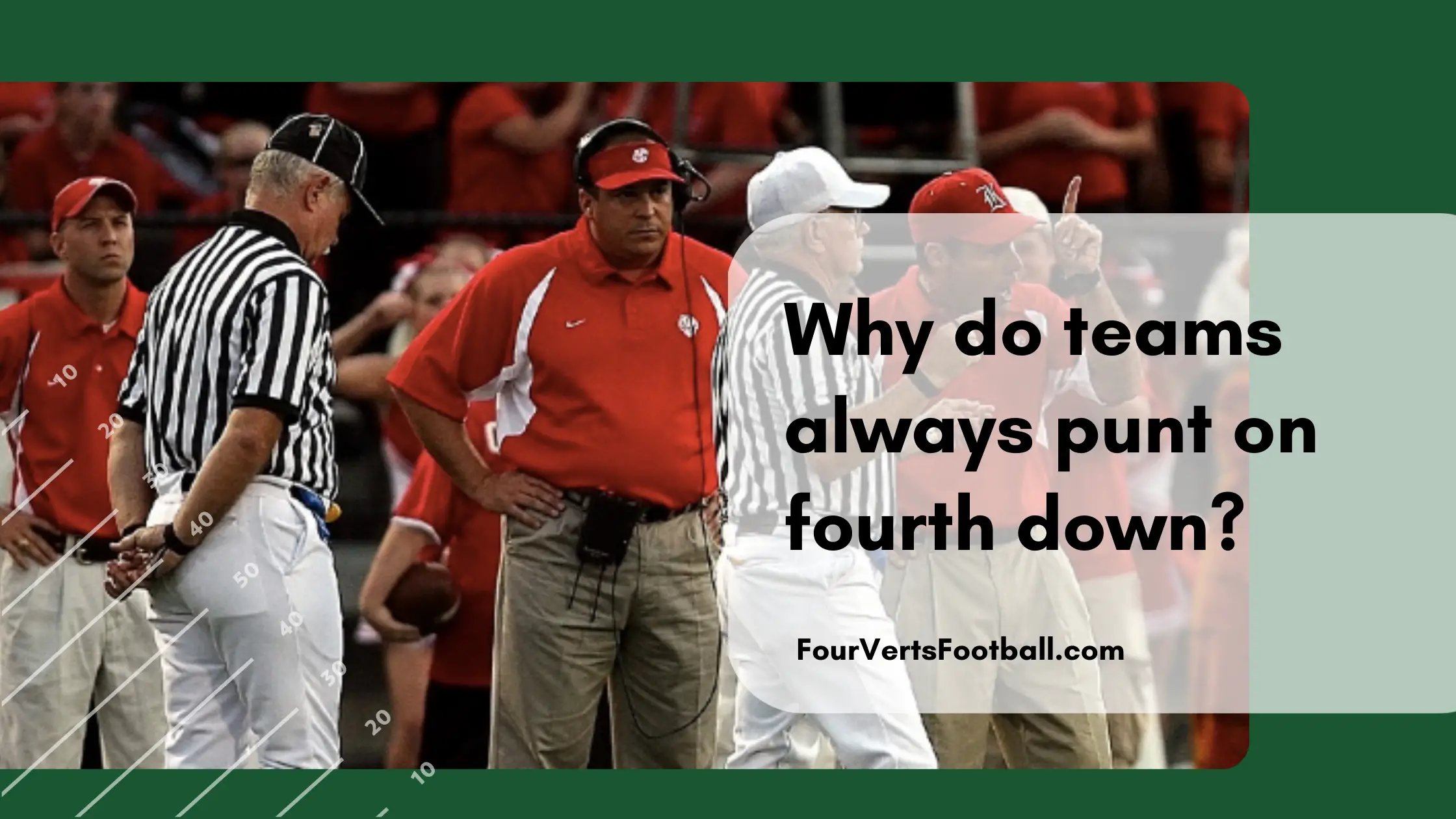Teams almost always punt the ball on fourth down because failing to get the first down results in better field position for their opponents. Teams are not required to punt the ball on fourth down but not doing so is usually considered too risky.
To get a better understanding of why teams punt the ball on fourth down you must first understand the down system.
Each time the offense has the ball they have four chances (downs) to move the ball ten yards. If they fail to get the ten yards on by the fourth play then they must give possession of the ball to the other team at their location.
Oftentimes teams will have possession of the ball close to their own endzone. Giving the ball away in this situation is not worth the risk of trying to get the first down.
The location in which you start with the ball is referred to as starting field position. Punting the ball is going to result in better field position throughout the game.
Punting on fourth down and field position
Giving opponents great field position
The main reason that teams choose to punt the ball on fourth down is so that they do not give their opponent a favourable field position.
In a football game, a team will usually start their drives somewhat close to their own endzone. This is because most times a team will start their possession after receiving a punt or kickoff.
These plays move the ball towards a team endzone and give them a long distance to cover in order to score points.
Now think about a fourth down in which team 1’s offense is on the fifty-yard line. If the team punts the ball team 2 are likely to start the drive within their own twenty-yard line.
But if the offense tries to run a play on fourth down team 2 will get the ball at midfield if the first down is not achieved.
This means they will have a noticeably shorter distance to travel to score points. If team 2’s offense gains fifteen yards after receiving the ball at midfield they will already be in field goal range.
This makes it way too easy on the offense to score. Overall this makes the risk of attempting to convert the fourth down not worth it.
Giving yourself poor field position
On top of helping out your opponents via failing a fourth-down conversion, a team can also hurt their own field position.
Let’s take the same example above in which team 1 fails to convert a fourth down at midfield and gives their opponents the ball at the fifty-yard line.
Say team 2 did not get a first down on their drive and decided to punt the ball. If they punt the ball from the fifty-yard line it is likely it will be downed inside the twenty-yard line of team 1.
This means that team 1 must start their drive close to their own endzone.
If team 1 had decided to punt the ball in the first place team 2 would have started much closer to their goal line. If they failed to get a first down as they did at midfield they would still choose to punt the ball.
A punt from near their own end zone would likely result in team 1 getting the ball at midfield.
By failing to punt the ball in the first place Team 1 would have lost roughly thirty to fifty yards in field position which can make it much harder for them to score on their next drive.
That is all on why teams punt on fourth down in football if you want to find more answers check out what fourth down means in football or what a punt returner is.

